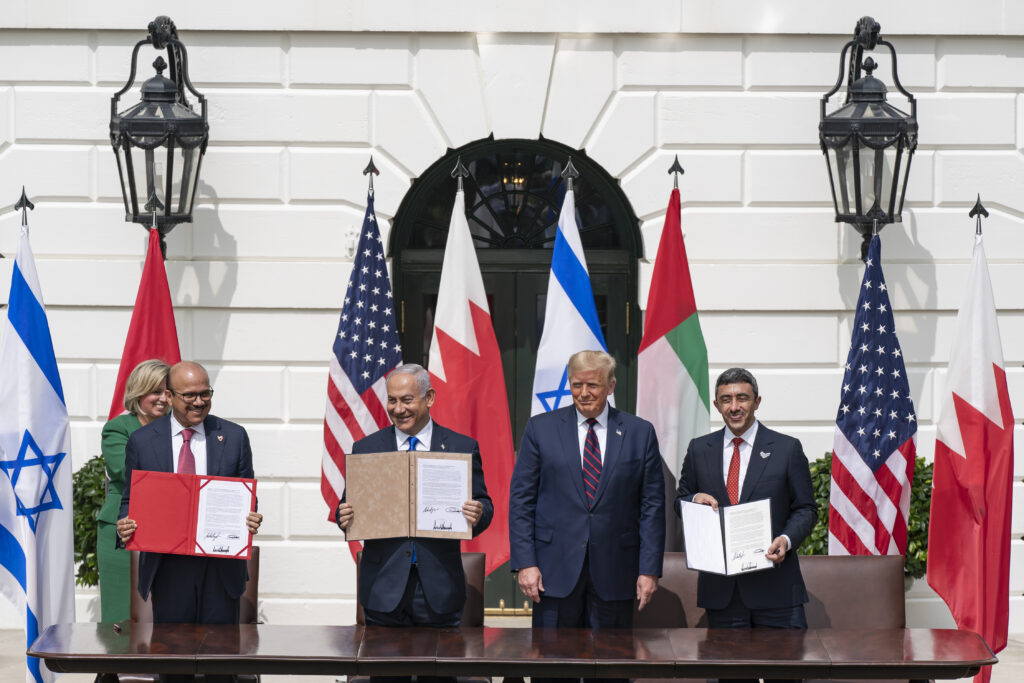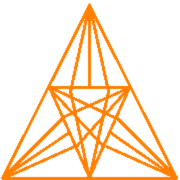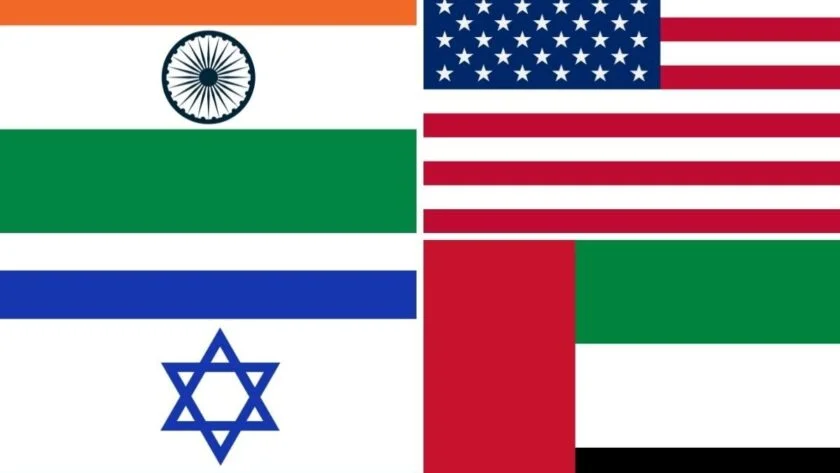In September 2021, the leaders of the Quadrilateral Security Dialogue – President Joe Biden, Prime Minister Modi, Prime Minister Morrison and Prime Minister Yoshihide Suga met for their first-ever in-person summit. Even as the Indo-Pacific QUAD is still finding its feet in the world, there is an arrival of a new Quad in the Middle East.
On 18th October last year, foreign ministers of the United States (US), India, UAE and Israel met together for the first time to discuss and enhance measures of cooperation between these nations. The meeting has led many experts to talk about the emergence of a new Quad, similar to the one in the Indo-Pacific.

Why these four countries?
Mohammed Soliman, an Egyptian scholar in the US, first suggested the idea of India, UAE, and Israel getting together.
In 2020, Israel, UAE, and Bahrain signed the historic Abraham Accords facilitated by the US to normalise relations between Israel and many Arab countries.

Last December, the new Israeli Prime Minister Naftali Bennett became the first-ever Israeli prime minister to visit the UAE, where crown prince Sheikh Mohammad bin Zayed warmly received him. This reflects the growing technological and economic cooperation between the two countries, which has grown leaps and bounds in the last few years.
As the Abraham Accords was made possible during Donald Trump’s presidency, many in the US believed that they were just a part of his diplomatic gimmickry. However, his successor, President Joe Biden, has embraced his initiatives in the Middle East.
Therefore, this newly former grouping was a natural progression for the US, Israel, and UAE. The only odd, new inclusion is New Delhi. Thus, the adding of ‘Indo’ to the Abrahamic Accords underlines the dramatic shift and churn in Middle East’s geopolitics.
India and the other countries
The Middle East is strategically vital for India. A considerable portion of its energy imports comes from the region. The region has a substantial Indian diaspora and is a source of billions of dollars worth of remittances for India. Therefore, it becomes crucial for India to strategically manage its volatile region policies.
One of India’s crucial foreign policy gains has been the simultaneous expansion of cooperation with Israel, the Arab world, and Iran in recent years.
However, India’s renewed pragmatism has broken this assessment and demonstrated the viability of non-ideological cooperation in the Middle East. This has allowed New Delhi to re-configure its policies in the region, especially with UAE, Israel among others.
India and Israel are celebrating 30 years of diplomatic ties this year, and the bilateral relations are only getting stronger. Deep, multi-sectorial cooperation in defence technology, agriculture, water conservation, start-ups, etc., has given the bilateral ties a significant boost.

India and UAE are on the verge of signing a free trade agreement. In recent years, the two countries have deepened cooperation in multiple sectors, and the relations have been more robust than ever before.
Moreover, the US is one of India’s closest partners. There is hardly any area or field in which the two countries do not cooperate.
Therefore, the Indo-Pacific QUAD and now this new grouping in the Middle East suggest that New Delhi is now ready to move ahead from bilateral cooperation carried out in separate silos towards an integrated and comprehensive regional policy.
What the grouping means for India?
The most crucial point here is that, as with the Indo-Pacific QUAD, this is also a loose grouping, not a full-fledged alliance. Therefore, this provides India with an opportunity to deepen its cooperation with its partners without undermining its doctrine of ‘strategic autonomy.’

Many see this multilateral forum as a wise proposition that can serve India’s foreign policy goals. It can help India cultivate better ties with partners on shared interests, help India get purposefully involved in the regional dynamics, and give it a chance to expand its global footprints.
Moreover, many experts suggest that this will not be India’s only grouping or coalition in the region. It provides India with a plausible template to pursue many such multilateral groupings in the region based on shifting geopolitical strategies.
Is this the same as Indo-Pacific QUAD?
This grouping does not depict any competition to the Indo-Pacific QUAD, and the two are pretty different in many ways. Although their areas of cooperation can overlap, the two are distinct groupings with different geographical influences.
The Indo-Pacific QUAD is a coming together of democracies in the region, implicitly countering China’s growing assertiveness with a structured institutional framework taking space.

However, the desire to counter China does not fuel the new grouping. Moreover, it is still nascent without a comprehensive shared purpose or trajectory announced.
Although China is increasing its influence in the Middle East, the grouping is not primarily targeted against China or any other country in the region. The regional dynamics are far too complex for such a narrative to take place.
Want to know more about the Indo-Pacific QUAD, read it here!
What are the possible areas of cooperation?
The US statement about the meeting of the four foreign ministers stated climate change, maritime security, and political and economic cooperation as the core areas of debate.
The region has many strategically critical choke points. The Bab-el-Mandeb strait connects the Gulf of Aden and the Arabian Sea to the Suez Canal via the Red Sea is one such choke point. Having the ability to monitor such critical chokepoints can help the grouping secure the global energy network.

Like the Indo-Pacific QUAD, many experts believe that it would be plausible for this new grouping to concentrate on non-military issues such as environment, trade, energy, etc. Beyond trade and energy, there is also the potential to collaborate on semiconductor manufacturing, space technology, agriculture, etc.
Combining India’s manufacturing capabilities, Israel’s innovation prowess, UAE’s capital, along America’s strategic support would see a solid dynamic unfolding in the Middle East.
Moreover, success in these areas will open the door for other regional partners with similar interests to join the grouping, such as Saudi Arabia, Egypt, etc., giving strategic depth to Indo-Abrahamic Accords.
Conclusion
It is perhaps early to call this group the “new QUAD” because it is still in the nascent stage. It also took quite some time and effort to institutionalise the Indo-Pacific QUAD.
Nonetheless, it has great potential because of the warm relations between the four partners whose capabilities and interests complement each other, significantly impacting regional dynamics.
However, its success will depend on cooperation, regular engagements at the highest levels, effective implementation of the agreed objectives, and most importantly, successfully addressing the volatile region that the Middle East is.
About the Author:
Ayush Gala

Apart from being a percussionist and a cricket enthusiast, it’s the unfolding tumultuous events of Geopolitics and International Relations that give Ayush the adrenaline rush he craves for. So naturally, he is pursuing his Master of Arts in International Relations and Strategic Studies from the University of Mumbai. He also loves to analyse and discuss the socio-political issues in India. He has a burning desire to make the citizens of India more aware and informative on various matters concerning them.







[…] Read about the new QUAD partnership among the United States, India, UAE, and Israel! […]